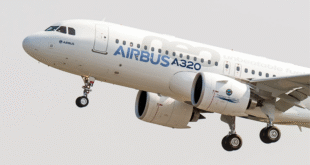SpaceX successfully launched 24 Starlink V2 Mini satellites—mission designated Starlink 17‑3—into polar orbit on the evening of July 18 from Vandenberg Space Force Base in California. The Falcon 9 rocket lifted off at 8:52 p.m. PDT, with payload separation shortly after, deploying the mini‑satellites designed to enhance global coverage.
Falcon 9 Booster & Landing Milestones
This mission marked the 14th flight of Falcon 9’s first‑stage booster B1082 . After stage separation, B1082 successfully returned and landed on the autonomous drone ship “Of Course I Still Love You” in the Pacific—one more landing in SpaceX’s growing tally of 477 successful touchdowns.
Why a Polar Launch?
SpaceX is rapidly scaling up its polar‑orbit capacity. In a July 14 update, the company outlined plans to deploy hundreds more satellites into polar orbits—aimed at enhancing high-latitude Internet coverage, including Alaska. With this second Starlink launch of the week from Vandenberg, SpaceX is on track to deliver over 400 satellites into polar orbits by year’s end, requiring at least 16 similar launches, each carrying ~24 satellites .
Launch Timing & Sequence
Coverage indicates liftoff occurred at 8:52 p.m. local time, transitioning to 3:52 a.m. UTC (July 19). Initial press announcements confirmed both the liftoff time and the successful insertion into low Earth orbit; SpaceX carried out these launches shortly after local sunset, optimizing alignment with polar injection trajectories .
Strategic Impacts & Future Outlook
The Vandenberg launch is SpaceX’s second mission of the week from the West Coast underscoring the accelerated cadence of its polar deployment program. The newly added satellites bring the total Starlink constellation to over 7,900 active units. Enhanced polar coverage is key for connectivity in remote regions, and this is aligned with SpaceX’s broader goal to achieve global broadband internet via Starlink.
SpaceX’s ambitious plan—to double polar‑inclination satellites—will benefit not only private customers but also serve remote areas and scientific installations at high latitudes. As polar missions continue, viewers along the U.S. West Coast may expect to see more evening and early‑morning launch events, with Falcon 9 boosters routinely returning to the same droneship. Falcon 9 booster B1082’s 14 flights also highlight SpaceX’s strides in reusability and cost efficiency




